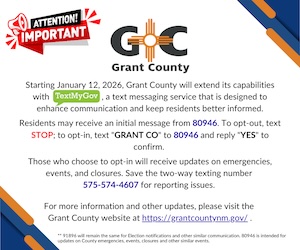Intuitive Machines' IM-1 Mission Features Technology Tested at Spaceport America
LAS CRUCES, N.M. (Tuesday, Feb. 13, 2024) – Over 50 years have passed since a United States-launched space vessel successfully completed a soft landing on the surface of the Moon. That could change this week, and in order to successfully touch down on the lunar surface, equipment tested at Spaceport America will be heavily relied upon.
SpaceX and Intuitive Machines are readying for the launch of the IM-1 mission lunar lander, Nova-C, which sees its launch window open Wednesday, February 14, 2024. Scheduled to launch from Launch Complex 39A at NASA's Kennedy Space Center at 12:57 a.m. EST aboard a SpaceX Falcon 9 rocket, the IM-1 Moon mission features the first commercial lunar lander – "Odysseus" – which hopes to become the first spacecraft from the United States to set down on the moon since Apollo 17 in 1972.
With SpaceX's Falcon 9 rocket serving as Nova C's means of launching to the Moon, the Intuitive Machines lander will employ a laser range finder technology, which was tested at Spaceport America, in order to safely land on the lunar surface.
Working in conjunction with Nova C's Terrain Reflective Navigation (TRN) cameras, the laser range finder is positioned on the lander's downward side and plays a crucial part in distributing information to Nova C's navigation algorithms which provide control and guidance throughout the descent process.
Intuitive Machines' three test flights designed to test the capability of the lander's laser range finder took place in April and October of 2021 as well as April of 2022. Each of the 2021 test flights were conducted aboard a fixed-wing aircraft and began at the Las Cruces Airport before entering the restricted airspace above Spaceport America's physical site. The 2021 flights flew descending flight profiles to destinations at Spaceport America in order to simulate the initial stages of a lunar landing.
In 2022, Intuitive Machines elected to conduct its final laser rangefinder test flight exclusively at Spaceport America. This time, a Robinson R44 helicopter was selected as the aircraft of choice for the test which again simulated the descent process of a lunar landing.
The 14-foot tall lander will carry one dozen payloads with it on its way to Earth's Moon. Flying under NASA's Commercial Lunar Payload initiative, which is geared toward encouraging private companies to deliver scientific instrumentation and supplies to the Moon, the IM-1 mission is slated to deliver payloads ranging from NASA scientific instruments to a number of sculptures to Malapert A. This satellite crater is situated a little less than 200 miles from the Moon's south pole and its nearby Malapert Massif region is one of 13 regions under consideration for NASA's Artemis III mission.
Should the mission succeed, Intuitive Machines' autonomous Nova-C lander would serve as the first-ever private spacecraft to successfully make a soft landing on the lunar surface. Desired spaceflight condition for the IM-1 mission would place it on the lunar surface Thursday, Feb. 22, 2024.
"We are very happy that we can support testing of such a wide range of space technologies at Spaceport America," said Scott McLaughlin, Executive Director of the New Mexico Spaceport Authority. "We wish Intuitive Machines the best of luck and will be cheering for their success and our nation's progress in going back to the moon."












